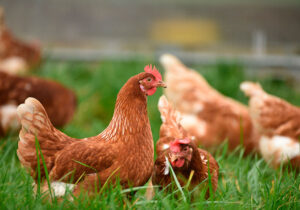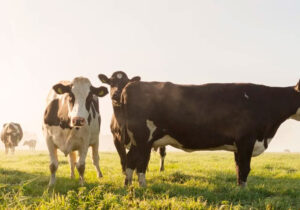
Effects of Heat Stress in Poultry
- زمان تقریبی مطالعه: 4 دقیقه

High environmental temperature is recognized as a major factor reducing growth rate and breast muscle development in commercial broilers. Under heat stress, broilers exhibit disturbances in acid-base balance, and the increase in respiratory rate can lead to respiratory alkalosis. Preventing heat stress requires a multi-factorial approach, which may include genetics (Gowe and Fairfull, 2008), housing (Yahav et al., 2004), temperature management (Yahav and McMurtry, 2001), and nutrition and feeding strategies (Balnave and Mutisari Abdoellah, 1990; Moritz et al., 2001; Uni et al., 2001; De Basilio et al., 2003; Zarate et al., 2003a; 2003b; Balnave and Brake, 2005; Ahmad and Sarwar, 2006; Daghir, 2008a).
Effect of Heat Stress on Heat Production and Heat Dissipation
Genetic selection for fast growth in broiler chickens has led to high feed intake and increased metabolic rate, which results in elevated heat production (Havenstein et al., 2003). Birds are warm-blooded animals and are capable of maintaining their body temperature within a narrow range (Yahav et al., 2005). However, at high ambient temperatures (Yahav, 2009), their ability to dissipate heat becomes limited.
Exposure to high environmental temperatures or intense physical activity—or both—can raise body temperature. If this heat is not effectively dissipated in a short time, hyperthermia may occur. Conversely, exposure to cold conditions increases metabolic activity to generate heat, but excessive heat loss can ultimately lead to hypothermia and death (Mount, 1979).
Heat Production from Feed Intake
In growing poultry, a large portion of heat production results from energy used for maintenance metabolism. Physical activity associated with searching for food and water increases maintenance energy requirements (Gous and Morris, 2005). Feeding-related activities require more energy (Andersson et al., 2001) and increase total heat output. The form of feed affects the energy cost associated with feeding behavior. Birds spend significantly less time eating pelleted feed compared to mash, which can save up to 6% of energy (Gous and Morris, 2005)—a beneficial factor during heat stress.
Heat is also generated from digestion, absorption, and utilization of nutrients—a process known as heat increment. Heat stress has been shown to reduce the digestibility of dry matter, protein, and carbohydrates, while fat digestibility is relatively unaffected (Puvadolpirod and Thaxton, 2000b). Due to their high growth rates and high feed intake, broilers produce considerable metabolic heat.
Wiernusz (1998) estimated that approximately 60% of metabolizable energy intake is lost as heat. Heat production in broilers is also influenced by genetics (Buys et al., 1999). Fast-growing lines with efficient feed conversion generate less heat compared to slow-growing lines or inefficient ones. However, birds with rapid growth may face cardiovascular and respiratory issues due to higher metabolic demands. These birds show higher pCO₂ and lower pO₂ levels, indicating less capacity for gas exchange and thus less heat dissipation. Heat production also varies throughout the day based on the bird’s activity pattern (Syafwan et al., 2011).
A key consequence of heat stress is reduced feed intake as ambient temperature rises (May and Lott, 1992). Lower feed intake results in lower energy intake and consequently less metabolic heat production (Syafwan et al., 2011).
Effects of Heat Stress on Feed and Water Intake, Body Weight, Physiology, and Gut Development
Feed Intake
Poultry production efficiency is significantly affected by environmental temperature and humidity (Wiernusz, 1998). Broiler feed intake decreases as ambient temperature increases (NRC, 1994; Cheng et al., 1997). When room temperature rises from 21.1°C to 32.2°C, feed intake decreases by about 9.5% per bird per day from the first to the sixth week of age. Further temperature increase to 37.8°C causes an additional 9.9% reduction in feed intake per bird compared to 21.1°C (North and Bell, 1990).
Water Intake
High ambient temperatures lead to increased water consumption. At 38°C, broilers consume four times more water than at 21°C (North and Bell, 1990). New data show that water consumption increases by about 7% for each degree above 21°C (NRC, 1994).
Estimating water intake is important for understanding evaporative cooling mechanisms in birds (Belay and Teeter, 1993), which aid in thermoregulation (Ahmad et al., 2005). Water is involved in many metabolic processes, including thermoregulation, digestion, nutrient absorption, and transport. Water intake during heat stress depends on feed intake. Birds that eat an hour before heat exposure consume more water during heat stress than those that do not (Lott, 1991).
Body Weight
Birds exposed to high temperatures gain less weight compared to those raised under normal temperatures (North and Bell, 1990).


